Top speed 170 km/h Length 7.75 m First flight August 18, 1965 | Wingspan 13 m Introduced 1966 | |
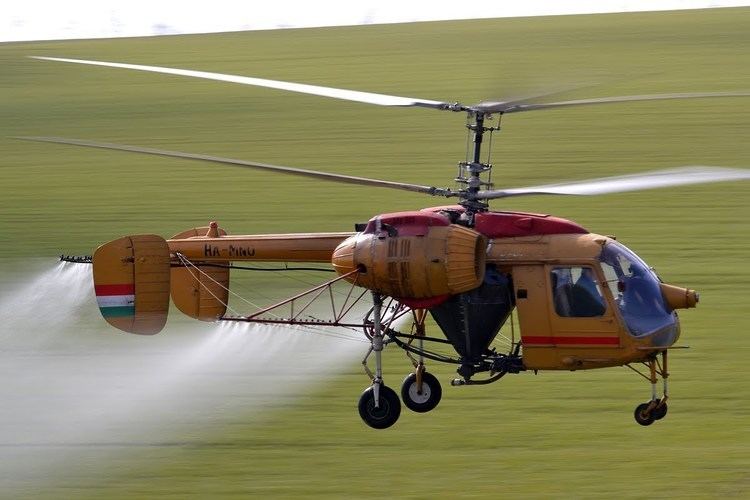 | ||
Manufacturers Kamov, Industria Aeronautică Română | ||
Kamov ka 26 soviet light utility helicopter
The Kamov Ka-26 (NATO reporting name Hoodlum) is a Soviet light utility helicopter with co-axial rotors.
Contents
- Kamov ka 26 soviet light utility helicopter
- goodbye maneuvers from kamov ka 26
- Development
- Design
- Operational history
- Variants
- Operators
- Former operators
- Specifications Ka 26
- References
goodbye maneuvers from kamov ka 26
Development

The Ka-26 entered production in 1969. 816 have been built. A variant with a single turboshaft engine was the Ka-126. A twin turboshaft-powered version is the Ka-226. (All the Ka-26/126/128/226 variants are codenamed "Hoodlum").
Design
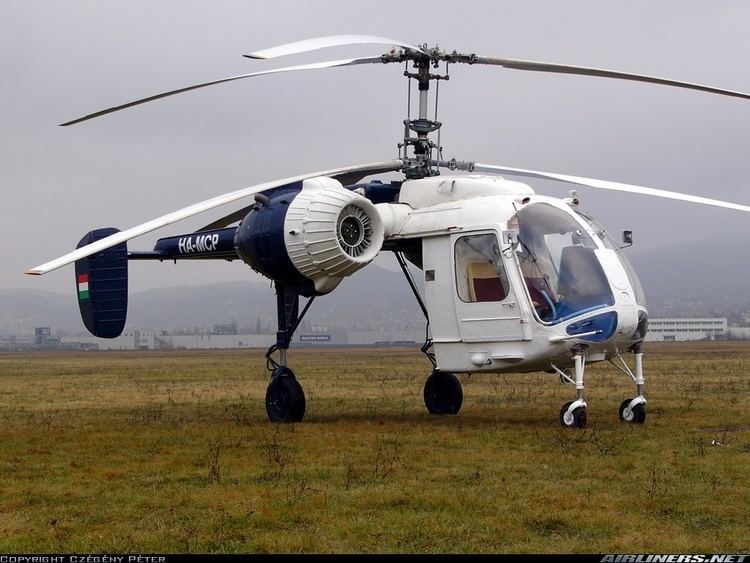
The fuselage of the Ka-26 consists of a fixed, bubble-shaped cockpit containing the pilot and co-pilot, plus a removable, variable box available in medevac, passenger-carrying and cropduster versions. The helicopter can fly with or without the box attached, giving it much flexibility in use. The Ka-26 is small enough and handles well enough to land on a large truck bed.
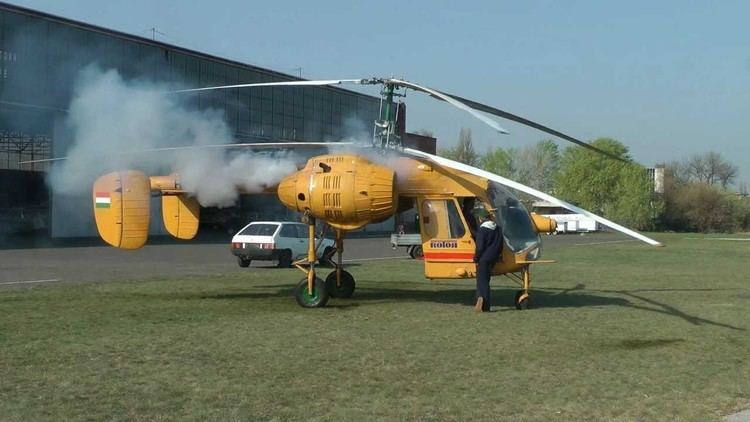
The main weakness of the Ka-26 is its engine. It is powered by two 325 hp (239 kW) Vedeneyev M-14V-26 radial engines mounted in off-board nacelles. The reciprocating engines, although more responsive than modern turboshafts, are relatively maintenance intensive. The Ka-26 is underpowered with its two radial engines, especially when used in cropdusting role, where excess payload is common. No other helicopter exists in the world that runs at constant 95% engine power for most of its flight regime. This leaves the pilot with little power reserve for emergencies. Due to frequent overloads, the interconnect shaft which joins the two engines is prone to breakage and requires frequent inspection.
Due to the limitations of the Ka-26, USSR and Romania agreed under the Comecon trade to build a single engine version called Kamov Ka-126 which had better aerodynamics and range.
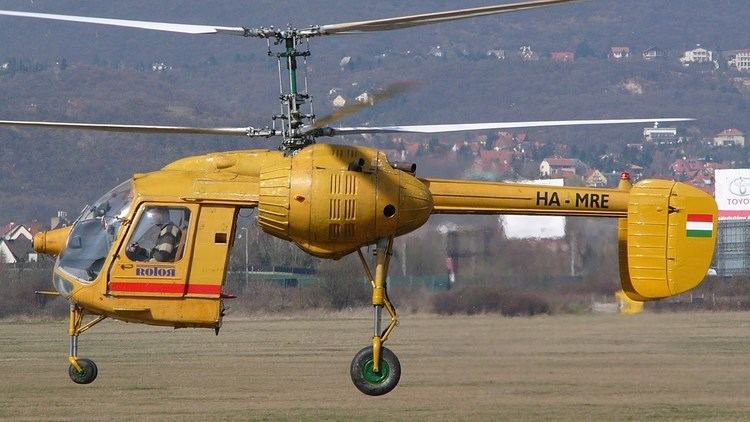
The standard instrumentation of the Ka-26 resembles that of larger naval Kamovs and is considered excessive for civilian or cropdusting use. The large cockpit panel with its 18 main dials obscures a significant part of the right-downwards view direction from the cabin, which is crucial to avoid telephone and power lines in agricultural and other low-altitude roles. It is common practice to replace the instrument panel with a simplified layout, retaining only the six generally useful dials for better vision.
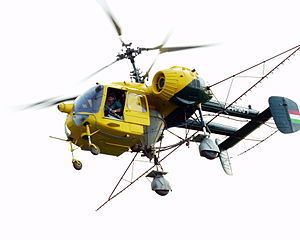
The low height of the lower rotor requires passengers and crew to approach from the rear when the rotors are turning, as it is low enough to contact a person's head at the front of the aircraft.
Operational history
The Ka-26 was used by some Warsaw Pact armies in the light desant or airborne role, but its slow (150 km/h) cruise speed compared with the Mil-2 (220 km/h) limits its military use but its shorter length (7,75m) compared with the Mil Mi-2 (11,9m) was an advantage when operating in an urban area, also a smaller rotor (13m) than the Mil-2 (14,6m) is an advantage, it has a longer range than the Mil-2 as well. It is, however, eminently useful for cropdusting. The coaxial main rotor configuration, which makes the Ka-26 small and agile, also results in a delicate airflow pattern under the helicopter, providing a thorough yet mild distribution of chemicals onto the plants. The Ka-26 is often used to spray grape farms in Hungary, where conventional "main rotor and tail rotor" layout helicopters would damage or up-root the vine-stocks with their powerful airflow. Hungarian Kamov operators claim that coaxial rotors of the Ka-26 creates an airflow which allows pesticides to settle underneath, rather than on top of, the leaves, this means a much more effective distribution of pesticides, as most pests and parasites do not live on the top side of foliage. Additionally, the coaxial vortex system is symmetrical, allowing the distribution of the pesticide to be more uniform. Symmetrical vortices
Variants
Operators
Former operators
Specifications (Ka-26)
Data from Jane's All The World's Aircraft 1982-83
General characteristics
Performance
